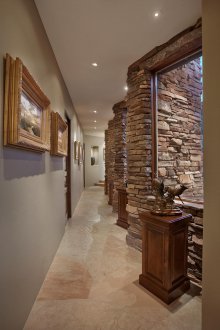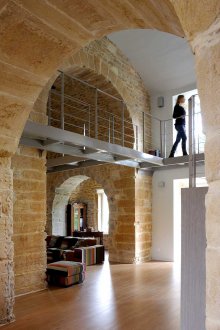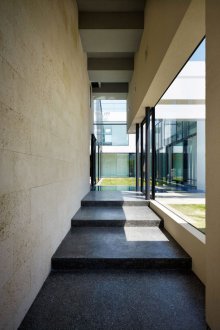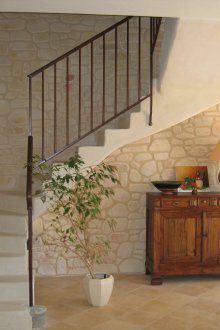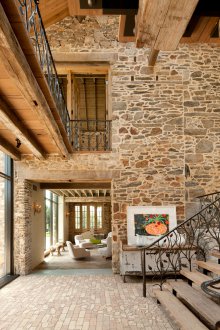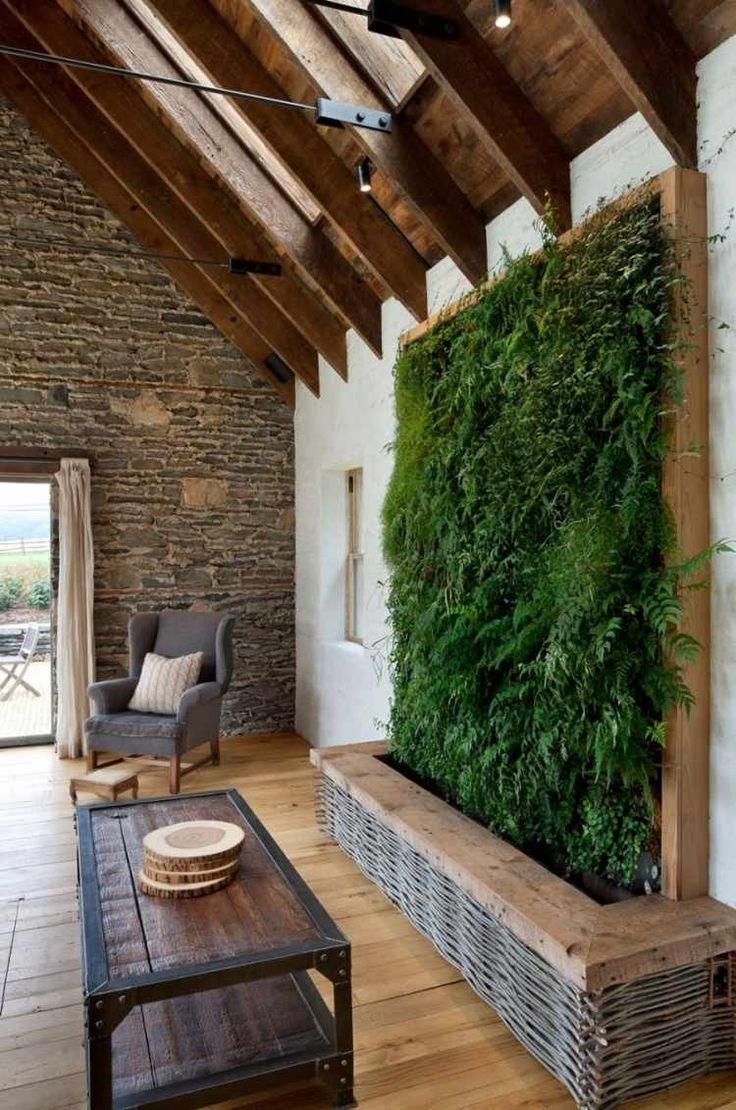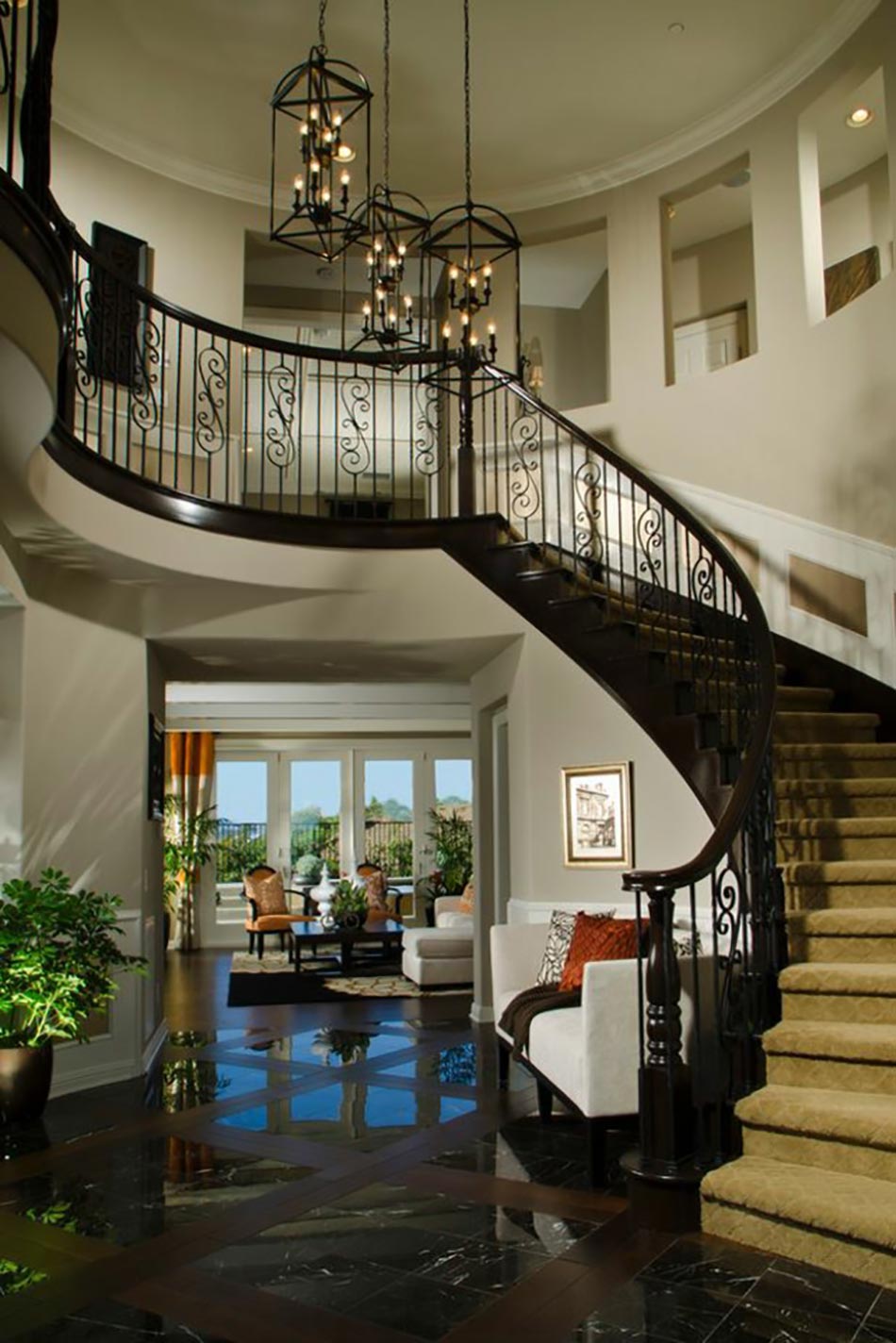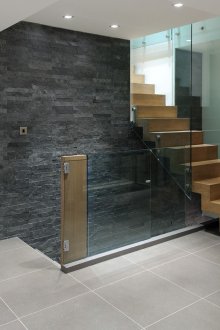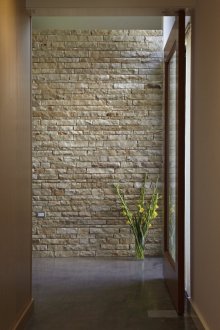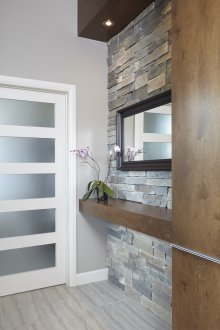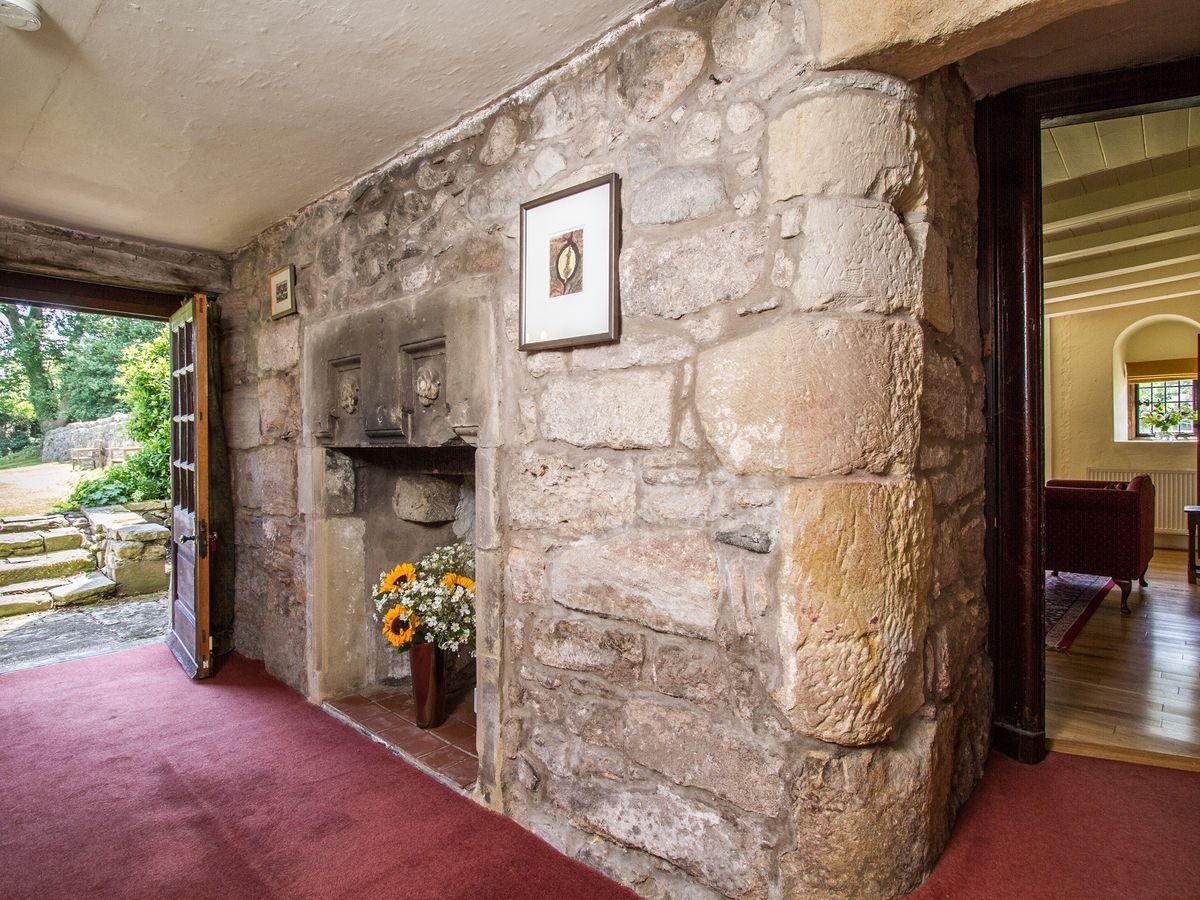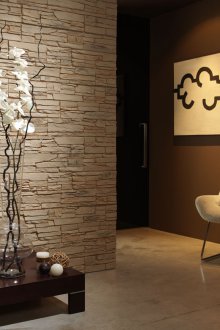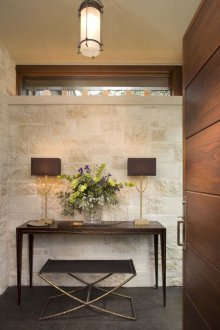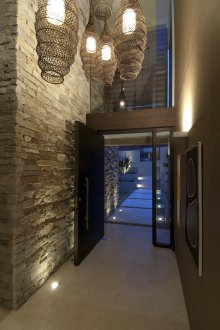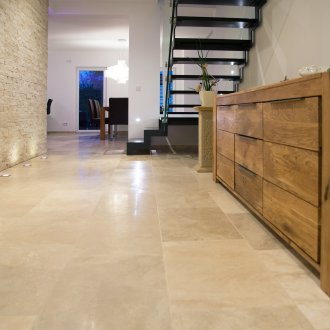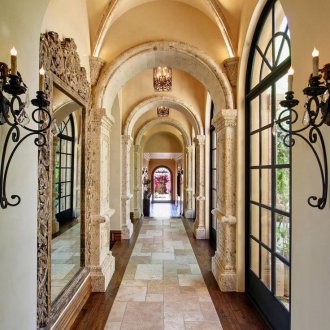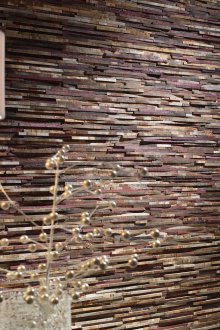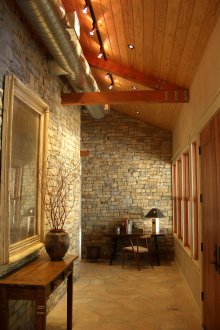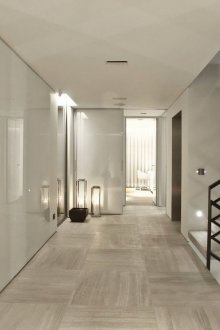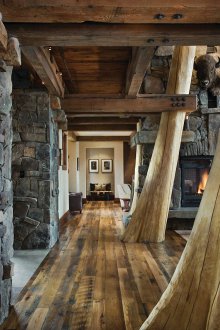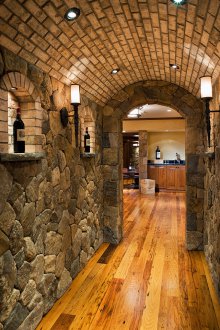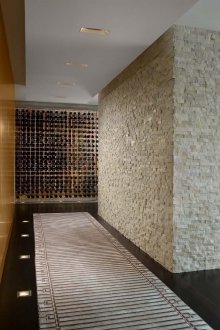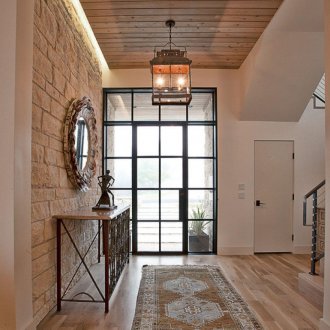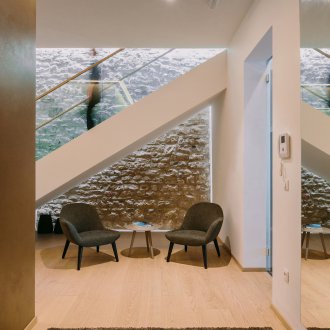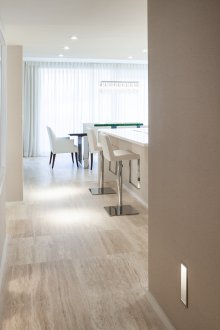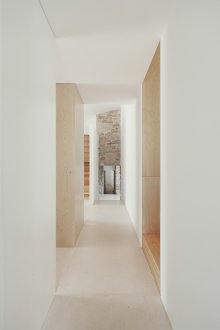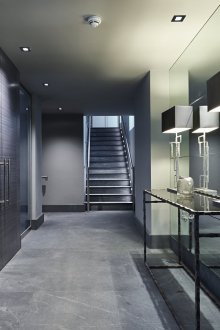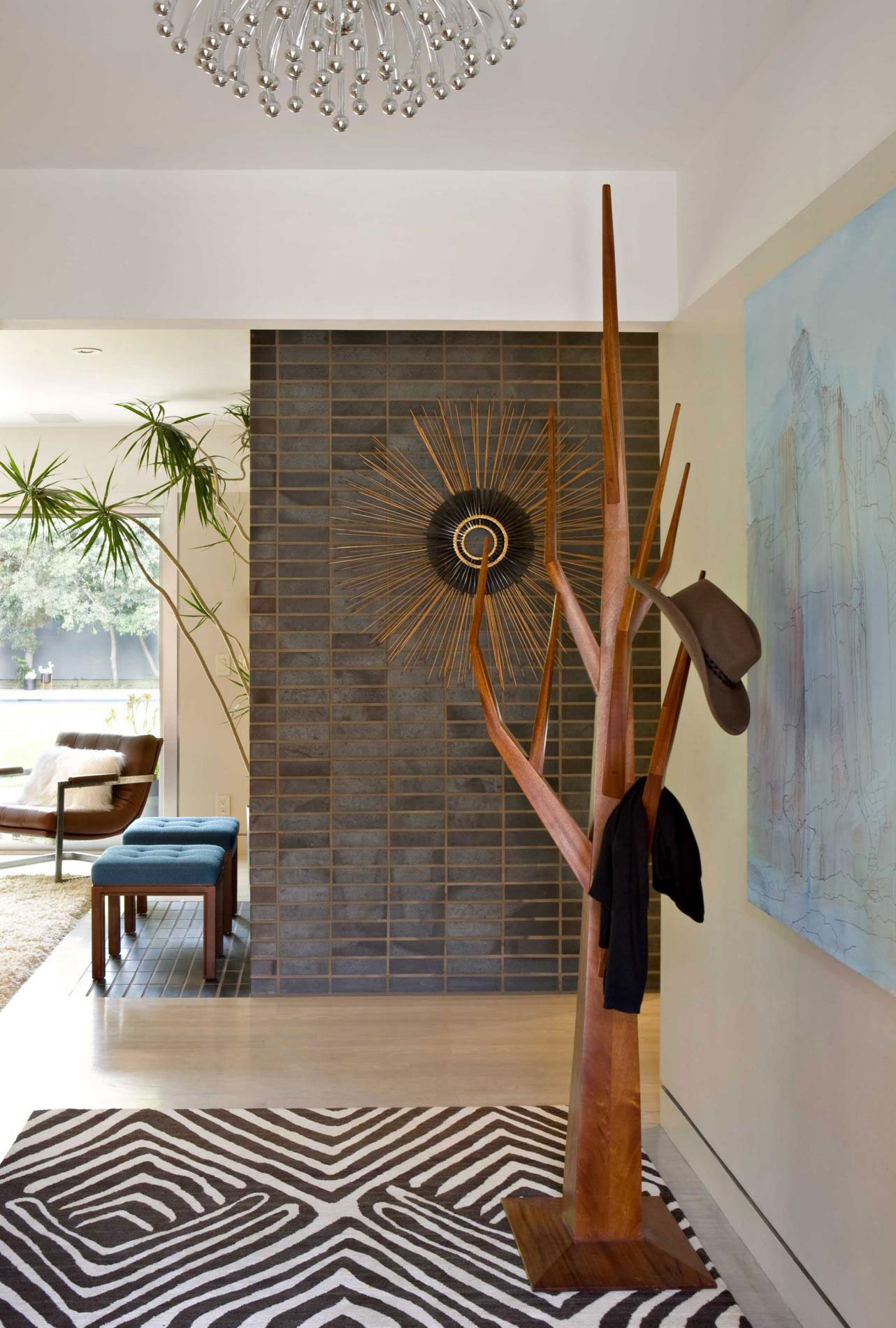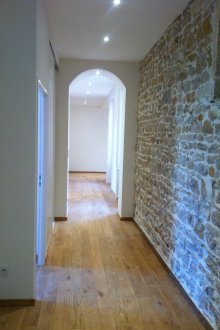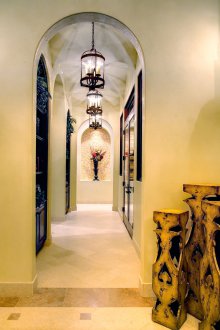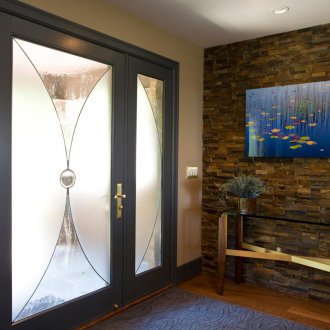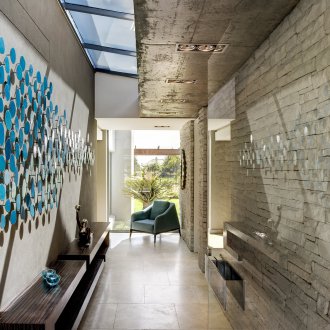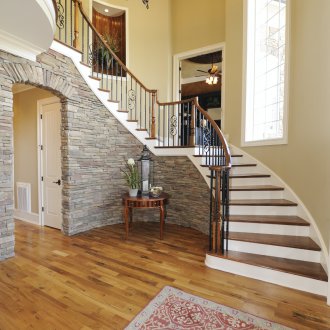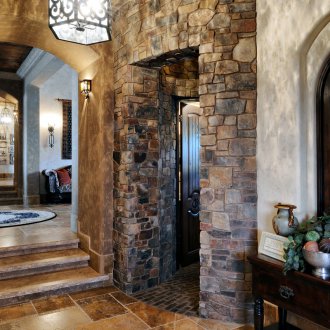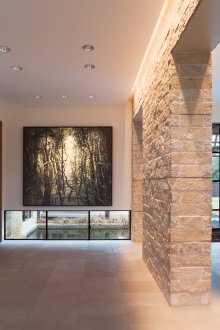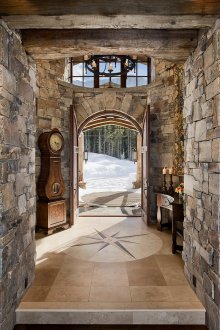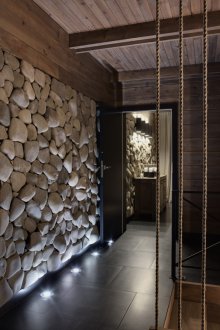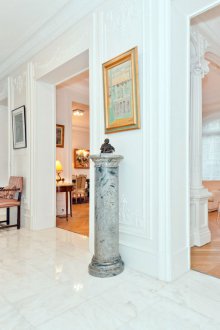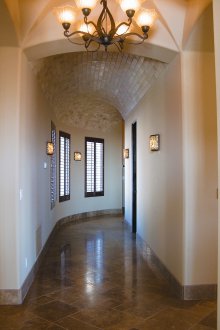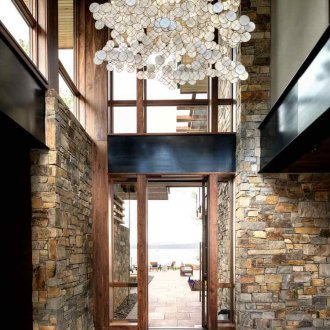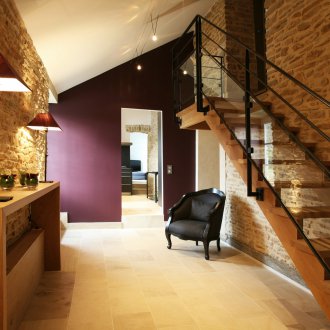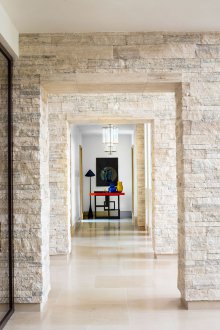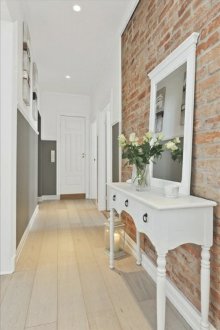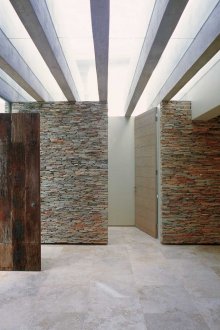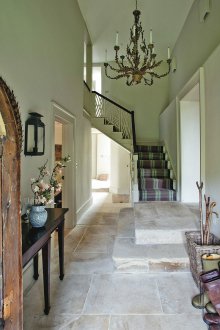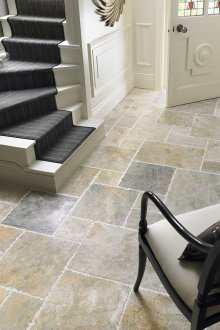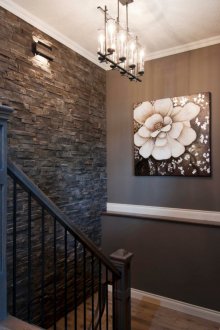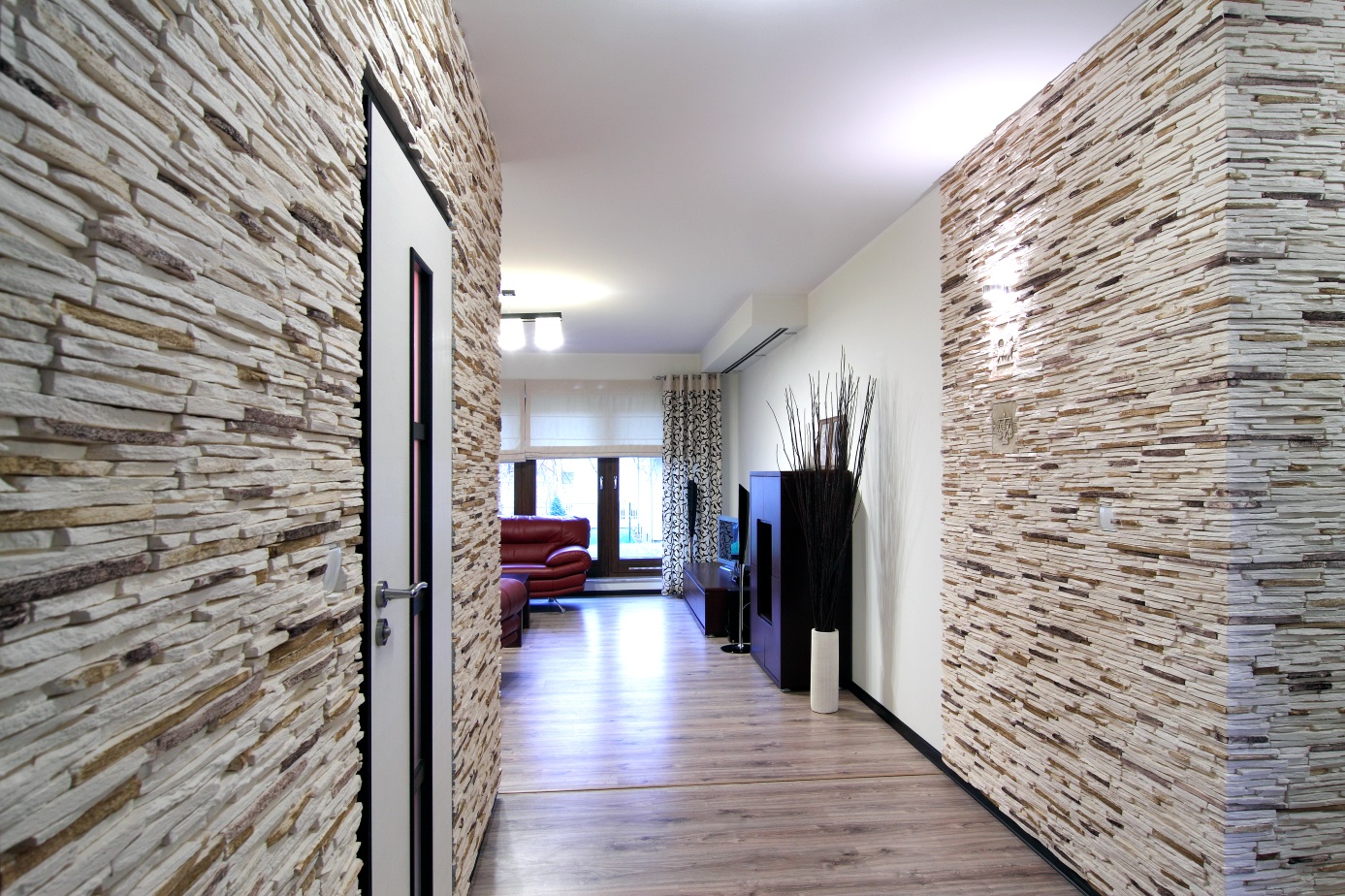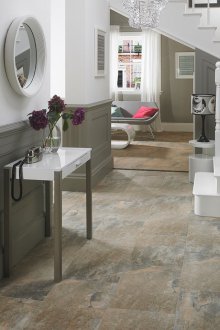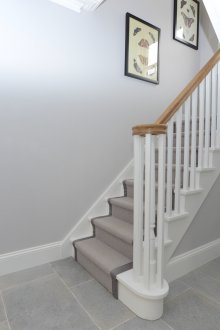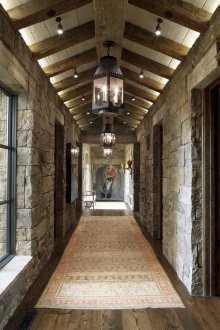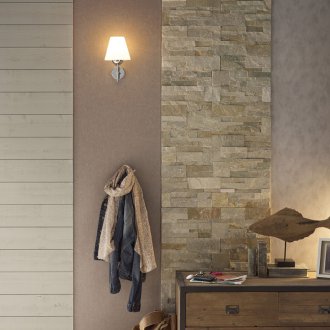Decorative stone in the hallway: a spectacular design of the entrance area (57 photos)
Content
- 1 Finishing stone in the hallway: competitive properties
- 2 How to use a stone in the hallway: features of the finish
- 3 Stone corridor decoration: successful decoration techniques
- 4 Artificial stone or natural mineral?
- 5 Decorative stone for interior decoration: types and characteristics
- 6 Decorative stone as flooring
Finishing the hallway with stone provides a noble appearance of the interior, which explains the popularity of the material among connoisseurs of the original decor. Natural types of the resource are used in arranging the entrance group of exclusive design, most often they use artificial stone in the design of the corridor.
Finishing stone in the hallway: competitive properties
Since the entrance area is subject to intense exposure to street dust and dirt, it is most practical to finish the surface of the room with materials resistant to aggressive environments. Decorative stone in the hallway stands out with a lot of advantages:
- differs in high esthetic characteristics;
- does not respond to aggressive moisture;
- has dirt-repellent properties;
- not afraid of contact with cleaning products;
- provides an excellent level of antibacterial qualities;
- It stands out for its ease of installation, maintenance and operation.
Decorative stone in the interior of the hallway can easily be combined with other types of coatings, while it almost always represents a key element of the design idea.
How to use a stone in the hallway: features of the finish
When decorating the walls of the interior of the entrance zone with a stone, factors such as:
Room Area
When arranging a spacious hallway, the following solutions are possible:
- full-scale decoration with decorative stone on all surfaces of the walls of the corridor;
- to use this finish only on one of the side paintings, and to use compromise types of materials in the design of the remaining walls.
A completely different approach is relevant in the decoration of the walls of a hallway with a small area. Here, fragmentary decor is used with stone: only selected surface areas are covered with this material.
Space Illumination Level
To unleash the full potential of stone decor, it is necessary to correctly design the interior design of the hallway. When arranging the entrance area, where there is practically no natural light, it is important to use white stone or light shades. If a corridor with windows to the south is formed, solutions with a different color accent are possible.
The decoration of the walls in the hallway with stone provides for a special light decoration of the space. Central lighting devices in this case are ineffective. It is worth relying on the possibilities of spotlights, which are able to evenly illuminate the entire surface and emphasize the charms of the stone decor.
Stone corridor decoration: successful decoration techniques
When arranging the walls of small rooms, a fragmentary method of decoration is traditionally used, highlighting the following sections:
- the perimeter of the opening of doors and windows;
- arches, niches, ledges on the wall;
- open viewing angles;
- areas of concentration: the plane under the picture, the area with a mirror and a lamp;
- contact surfaces in the hallway: areas near the hanger, shoe rack.
Using decorative stone on a free wall, you can create a beautiful panel with a picture of a tree or a flower arrangement. The chaotic arrangement of monophonic or multi-colored plates in the form of a mosaic also looks stylish.
Artificial stone or natural mineral?
The choice of finishing material for the hallway depends on the preferences of the homeowner and the financial component. The product of natural origin is sold in a high segment, while the functional and aesthetic characteristics of the product are able to level the high cost of the solution. Finishing the hallway with artificial stone will cost an order of magnitude cheaper than a natural example.
Each type of cladding has a number of properties that you should be aware of when choosing a product.
Natural stone in the interior of the hallway: features and benefits
The wild mineral stands out for its luxurious appearance and wear resistance, which allows emphasizing the elite status of the interior. The material is not subject to negative environmental influences. The surface is perfectly cleaned from dust and dirt using warm water and detergents. The coating has high thermal insulation properties.
The key disadvantage of wild stone is the sky-high cost. It is also worth bearing in mind that a natural mineral weighs more; the finish involves significant surface loads.
Artificial stone in the corridor: advantages of using
The sample has almost all the advantages of natural material, while the following application features are highlighted:
- this coating option has a relatively low weight, which reduces the load on the structure of the house;
- simplicity of laying artificial stone: the finishing material is fixed to glue, installation is possible even on embossed surfaces;
- A huge range of products allows you to choose the solution of the optimal color and texture, sizes and shapes.
In current catalogs, all kinds of finishing stones of natural and artificial origin are presented.
Decorative stone for interior decoration: types and characteristics
When arranging the hallway interior, various types of stone cladding are used in various composition and properties:
- gypsum imitation - provides low weight, is implemented in an accessible segment, the surface is protected by special compounds;
- concrete tile - the composition includes sand, plasticizers, expanded clay granules, ceramic dust, coloring pigments;
- porcelain tile - consists of different grades of clay, minerals, feldspar and pigments. Imitates polished mineral or stained glass;
- agglomerates - the product is created on the basis of marble and granite chips, limestone, quartz sand and dyes;
- acrylic stone - you can make material of any shape and size;
- flexible decorative stone - the flexibility of the structure allows you to decorate any surface, including convex structural elements, round shapes, corners, to perform a radial lining of niches;
- ceramic tile is a traditional wall decoration material, presented in a wide range of sizes and shapes. Stone tiles can provide a decorative effect and protect the surface from external loads.
According to the manufacturing method, the following types of finishing material are distinguished:
- rubble - the appearance of a boulder or pebble is imitated;
- chipped - imitation of raw rock in the form of quartz, limestone, marble or granite base;
- sawn - the product stands out with its clear geometry and unpolished surface;
- mosaic - represent an organic composition of fragments of various shapes and colors;
- brick - decor-imitation of brickwork;
- tiled - the type of polished marble or granite is copied;
- fantasy - decor in the form of stones that do not exist in nature.
In the interior of the hallway, it is not recommended to combine stone decor of different textures, with the exception of the simultaneous design of walls and floor surfaces with this type of cladding. At the same time, wallpaper and decorative plaster work well with stone. If desired, in the stone decoration of the walls of the corridor, you can also use wood, gypsum stucco, paint.
In the decor of the hallway with stone and wallpaper, certain requirements must be observed. For example, wallpaper should choose light shades. The laconic design of the canvas is also important in order to eliminate disharmony in the interior composition.
Decorative stone as flooring
Tile imitation of natural stone is considered an excellent finish on the floor in the hallway. This reliable coating, durable and practical cladding material, also has a presentable appearance. When designing a small space, stone slabs in the form of imitation marble are most often used.
The variant of light-colored floor tiles with veins, which combines well with other decorative solutions in the interior, is very successful. To visually increase the height of the ceiling, it is worth using a large floor covering in a dark version that simulates granite or graphite, and the hallway walls should be lined with light-toned decor.
Stone decor harmoniously fits into various interior styles. When choosing the finishing material of the correct forms and textures, it is easy to eliminate the imbalance in the compositional solution when arranging the hallway of classical style. The decorative stone also looks organically in the interiors of a minimalist style.
The use of decorative stone in the lining of the hallway slightly increases the costs of a financial and temporary nature. Moreover, all the difficulties are more than compensated by the quality and duration of the coating, as well as the spectacular appearance of the finish.
